Not Just Cats and Dogs: Good Pets for Kids

A cat, a dog, a hamster, or even a parrot—there are plenty of pet options for kids. The key is to choose one that not only brings joy but is also manageable in terms of care and veterinary needs. Unfortunately, parents often overlook these aspects, turning what was meant to be a pleasant surprise into unexpected expenses and frustration.
That doesn’t mean you have to give up on the idea of getting an unusual pet. We’ve explored today’s “pet market” to help you find a unique companion for your child—one that fits your budget and is easy to care for.
Contents:
- Choosing the Right Pet for Your Child: What to Consider
- The Good Pets for Children
- How to Teach a Child to Care for a Pet
- The Most Important Takeaway
- FAQs
Choosing the Right Pet for Your Child: What to Consider
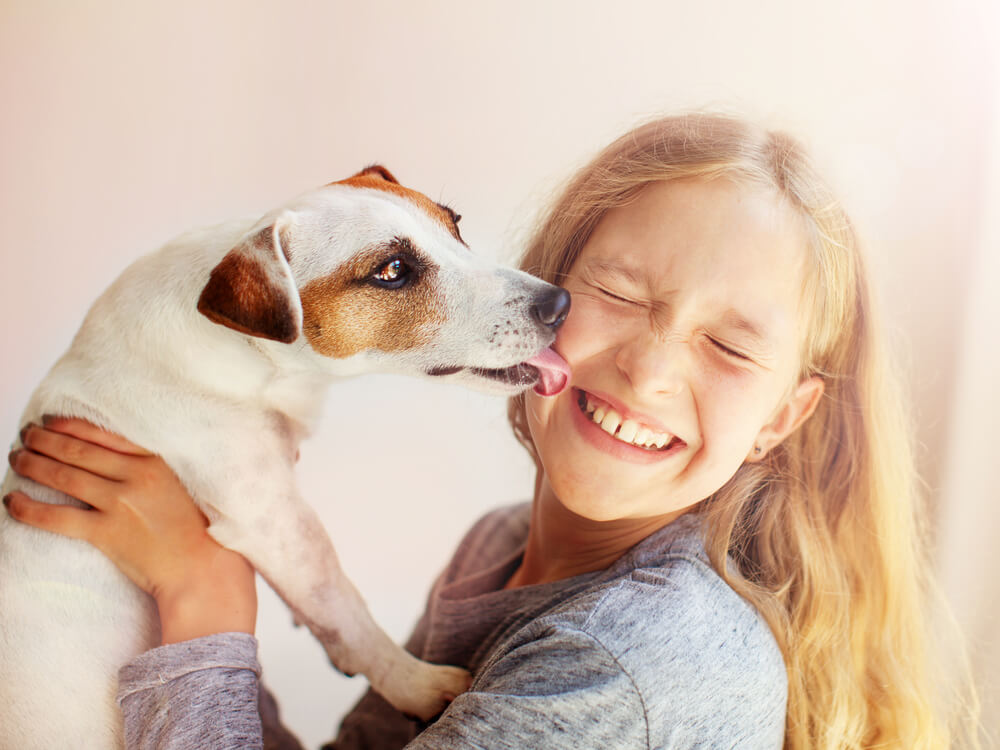
Gladskikh Tatiana/Shutterstock.com
Bringing a pet into your home is a big responsibility. You’ll need to ensure that it gets proper nutrition, enough physical and mental stimulation, and a suitable living environment.
It’s also important to remember that every pet is a living creature. It doesn’t just feel hunger or pain—it also experiences emotions. Taking care of its psychological well-being is just as essential, even if that sounds surprising or amusing to some.
It’s worth noting, too, that even smaller animals—like guinea pigs, rats, hamsters, gerbils, and mice—have big needs. They need plenty of exercise, space to move around, and a balanced diet to remain healthy and happy.
It’s crucial, therefore, to not make the mistake, as many do, of assuming that smaller and seemingly simpler animals are easy pets for kids to have. They all need care and attention, and there are ups and downs for every animal, from fish to rabbits.
Below, we’ll discuss the pros and cons of having a pet, the key factors to consider when choosing one, and what you should think about before making a decision.
Pros and Cons
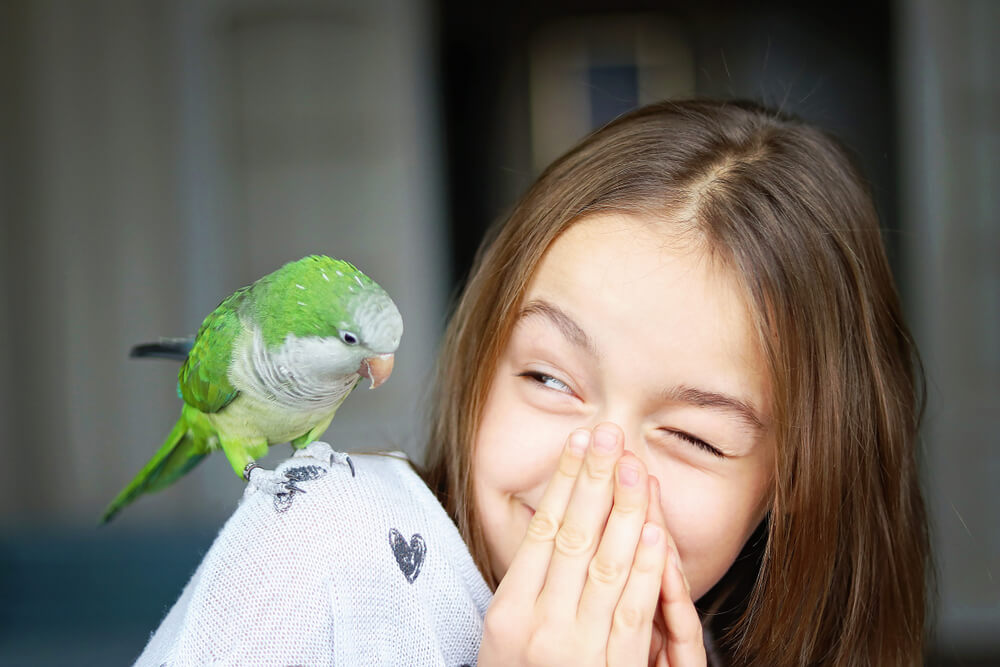
Tatyana Soares/Shutterstock.com
One of the biggest benefits of having a pet is its positive impact on health. For example, in 2018, a research team from Ulm University in Germany and the University of Colorado in the U.S. published a study showing that city dwellers with limited exposure to animals experience higher levels of stress compared to people living on farms.
Why is this? There are several explanations, but many experts say that pets can provide emotional balance to people. They offer companionship and comfort, and having a dog, cat, or even a hamster to come home to, chat with, or play with, can all help people de-stress and feel less negative emotions like loneliness.
Аnother well-known study found that owning a pet can improve heart health. This mainly refers to pets that help people stay active, like cats and dogs, which you can play games with and take out for walks. But even having smaller pets, like chinchillas, can help people be more active if they let them out around the home to play with.
Then there’s the social aspect—many believe that having a pet teaches kids responsibility and provides a loyal friend. And while this is often true, it also depends on factors like the pet’s breed or species, its temperament, and the child’s expectations of what having a pet actually means.
This is why some of the best pets for children are those that tend to be social, easily tamed, and playful, like dogs, as kids can quickly form bonds with them. Pets that are more likely to bite, or those that like being left alone, like bearded dragons, snakes, and other reptiles, may not fall among the best pets for kids.
However, no matter how much you prepare your child for pet ownership, the responsibility for the animal’s well-being ultimately falls on you. After all, they’re still kids, and you’re the adult. Both legally and developmentally, children are not yet capable of making fully independent decisions or taking full responsibility for another living being.
Some tasks should also remain off-limits for kids. For example, even if your child is a teenager, they shouldn’t be walking a dog alone, especially a large or energetic one. Little ones should also be monitored closely when handling small pets for kids that may be a bit delicate or easily frightened, like hamsters and guinea pigs.
Choosing a Pet: What to Look For and What to Consider
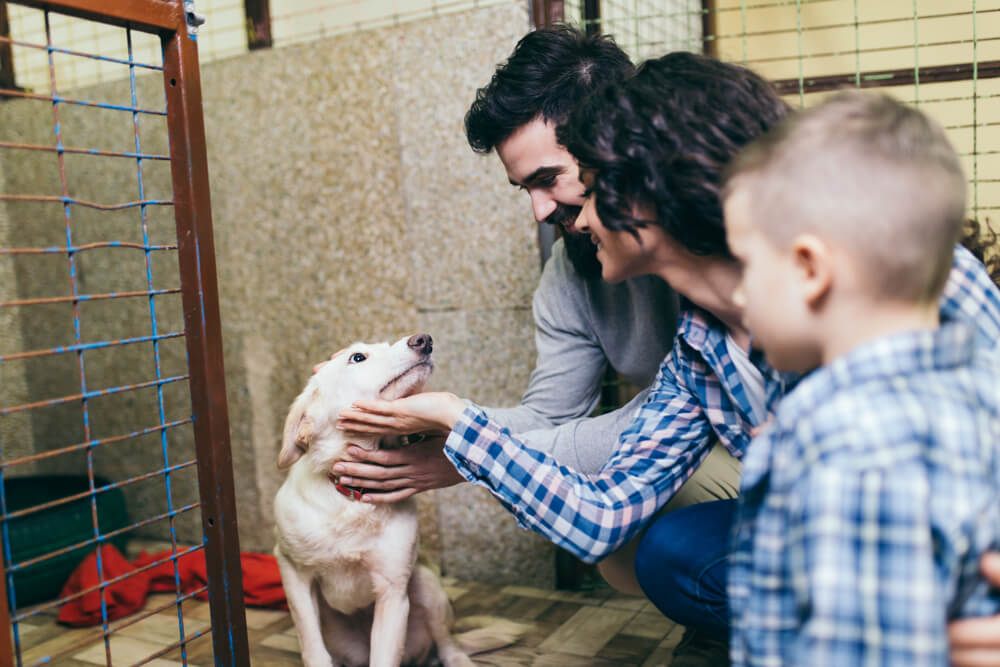
hedgehog94/Shutterstock.com
So, you’ve weighed the pros and cons and decided—it’s time to welcome a new family member. But how do you choose the right one? Even among cats and dogs, there are hundreds of breeds, each with vastly different traits. Sometimes, you see a picture online or meet an adorable pup on the street and instantly fall in love. But how do you avoid an impulsive decision that might leave you with a pet very different from what you expected?
The first and most important thing to remember—always—is that you’re bringing a living creature into your home. Even a simple aquarium fish has an awareness of its surroundings—it feels hunger and pain and can get sick. Your primary responsibility as a pet owner isn’t just to bring joy to your child but to ensure the pet has everything it needs to live a healthy and comfortable life.
That applies to all pets for kids, from birds to fish to rodents and more. The factors below will also help you make up your mind and find the right pet for kids.
Health Considerations
One of the key factors to research is the pet’s overall health and common illnesses. Learn about the typical health issues of your chosen animal, how frequently they occur, and what treatment options exist.
For example, hamsters, which are often considered low-maintenance pets, are prone to conjunctivitis, ringworm, and proliferative ileitis. Some of these illnesses can even be transmitted to humans. Treating them requires a specialized veterinarian who deals with small rodents—meaning it can be costly and not as simple as it might seem at first.
Many other animals can also get ill easily, even those that seem small and low-maintenance at first. Guinea pigs have a lot of strict dietary demands, for example, and can suffer issues like vitamin deficiencies and impaction if they’re not looked after properly. Lots of cats and dogs can have problems with joints, hair, and teeth without proper care, and so on.
Living Conditions
Another crucial aspect to consider before bringing a pet home is whether you can provide the proper living conditions. Take, for example, the leopard gecko (Eublepharis macularius), often thought to be a “put it in a tank and forget about it” kind of pet. In reality, setting up the right environment is more complicated than it seems. Experts recommend that the tank be at least four times the length and width of the gecko itself.
Beyond space, they also need a UV lamp or another heat source, which must be positioned correctly to create temperature zones inside the enclosure. You’ll also need a thermometer and a hygrometer because maintaining precise temperature and humidity levels is critical to their health.
Again, even the pets that seem easier, like a gerbil or a chinchilla, will still have certain demands. They need a good amount of space so they don’t feel boxed in and bored, hamsters need wheels, chinchillas need platforms to jump up to, and many rodents need hidey holes and similar spaces where they can nest and feel safe.
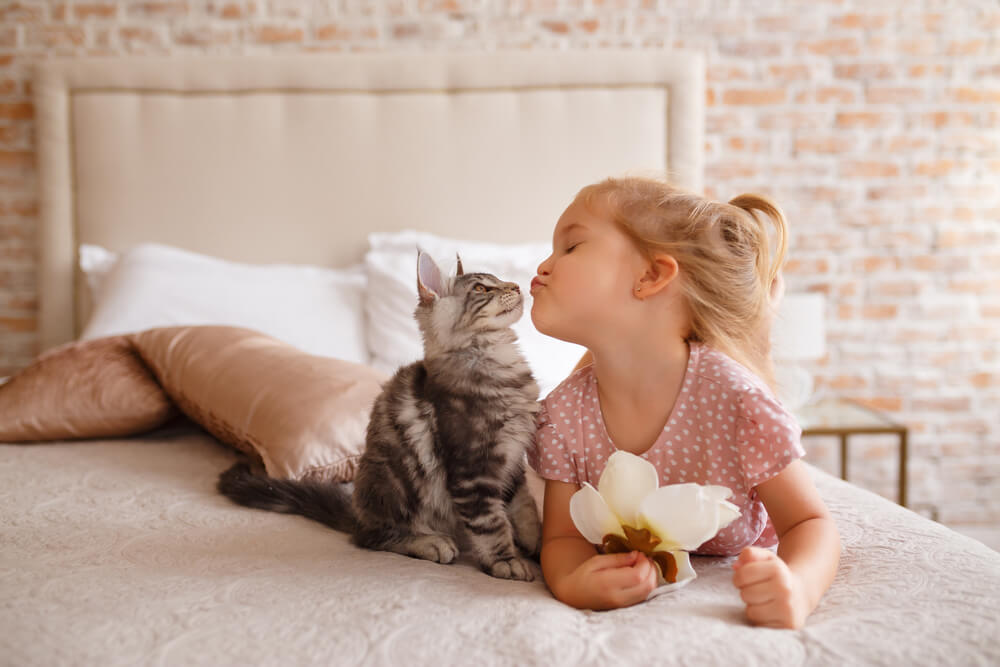
PhotoSunnyDays/Shutterstock.com
Your Level of Involvement
Think about how much time and effort you’re willing to dedicate to your pet. Some animals, like fish, require minimal interaction beyond feeding and tank maintenance. Others, like dogs, need constant attention. Simply taking a dog for a walk isn’t enough—they require training, socialization, mental stimulation, and regular vet checkups, including annual vaccinations.
You may also need to get involved in terms of managing the pet’s diet to make sure they get all the nutrients they need, clean out their cage or living area, make sure their water bottles or bowls are always full, clip nails, trim hair, and so on and so forth.
Natural Habits and Activity Patterns
Lastly, consider the natural behavior and lifestyle of your future pet. Some animals have biological rhythms that might not align with yours. Take slow lorises, for example. These tiny, adorable creatures are often popular due to their cute appearance and photogenic nature. However, lorises are nocturnal animals. They’ll be most active—running around, eating, making noise, and exploring—right when you’re going to sleep. Unlike some pets, they don’t adjust to their owner’s schedule over time, so don’t expect their nighttime antics to “pass” with time.
Choosing a pet is a big commitment, and making an informed decision will ensure both your family and your new furry (or scaly) friend are happy together.
The Good Pets for Children
We have carefully researched the most unusual and popular pet options. Below, you’ll find a dossier on some of them.
Leopard Geckos
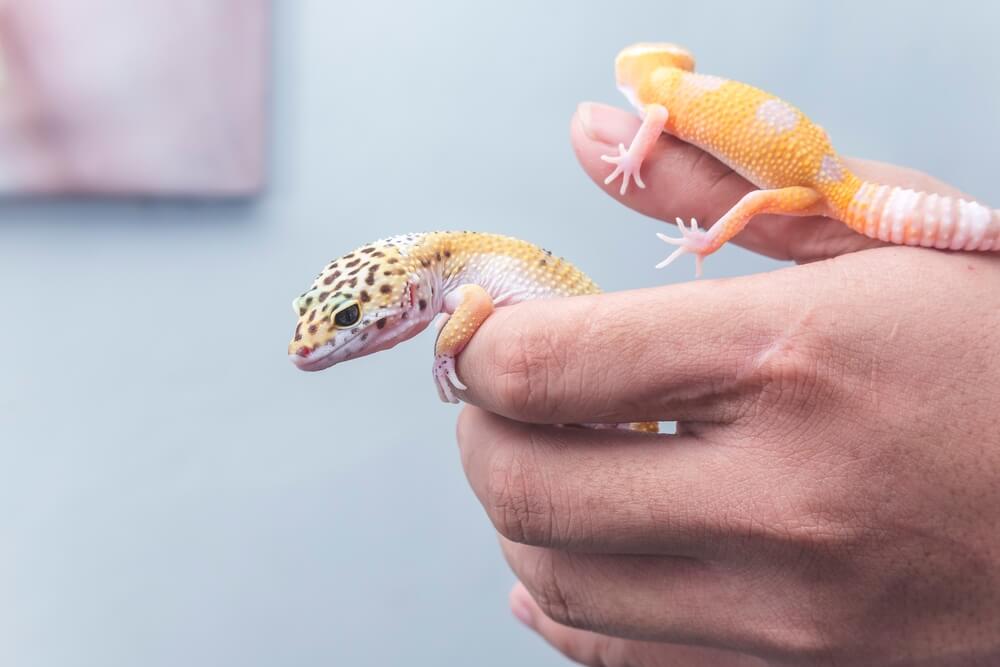
MDV Edwards/Shutterstock.com
- Best suited for: calm and observant children
- Not recommended for: kids who prefer active play with pets
- Minimum owner age: 10 years
- Allergen level: 1/10
- Difficulty of care: 7/10
Leopard geckos themselves are not allergenic, but some children may have reactions to their food, substrate, or even ultraviolet light.
Setting up and maintaining a proper terrarium can be quite costly. Additionally, some people might be put off by the gecko’s diet, which consists mainly of animal protein.
Yes, you read that right: live crickets are their favorite treat. They also enjoy mealworms and caterpillars.
Terrestrial Turtles
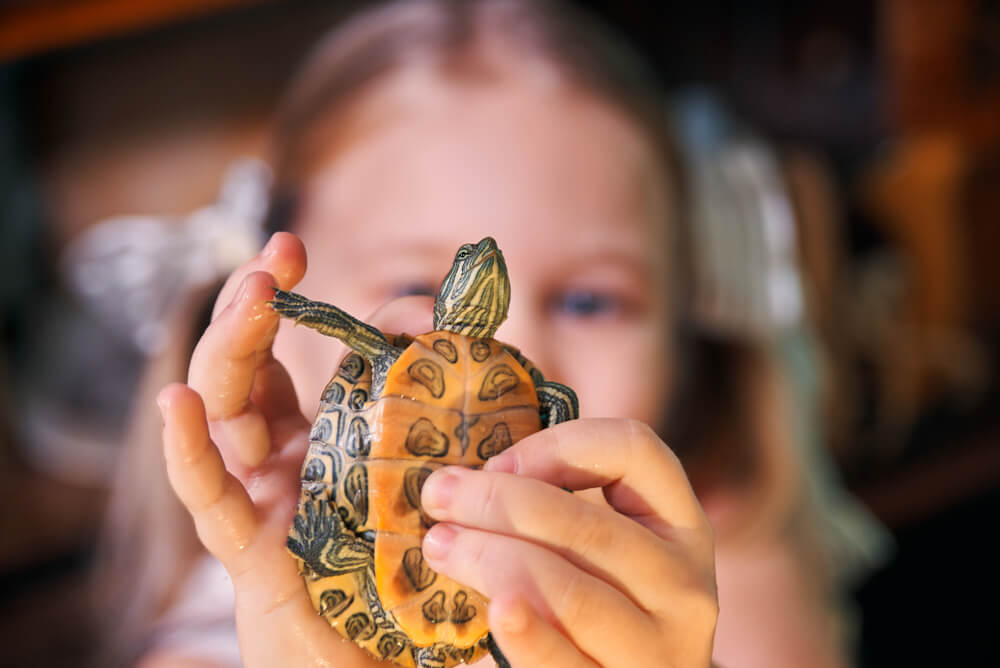
Olek Lu/Shutterstock.com
- Best suited for: almost any child
- Not recommended for: no specific restrictions
- Minimum owner age: 3 years
- Allergen level: 1/10
- Difficulty of care: 5/10
Turtles are a nearly universal pet choice, provided you strictly follow their feeding and care requirements. The difficulty lies more in the routine and frequency of these tasks.
Every 3 to 7 days, the turtle needs a bath, occasional claw trimming, and regular substrate changes. You’ll also need to clean the terrarium regularly. Setting up a proper habitat requires some investment—at a minimum, you’ll need a hiding place and a UV lamp.
On the bright side, their diet is quite simple: in summer, you can feed them straight from your garden. And in warm weather, once the ground is sufficiently heated, they can even be taken outside for a walk.
Hamsters
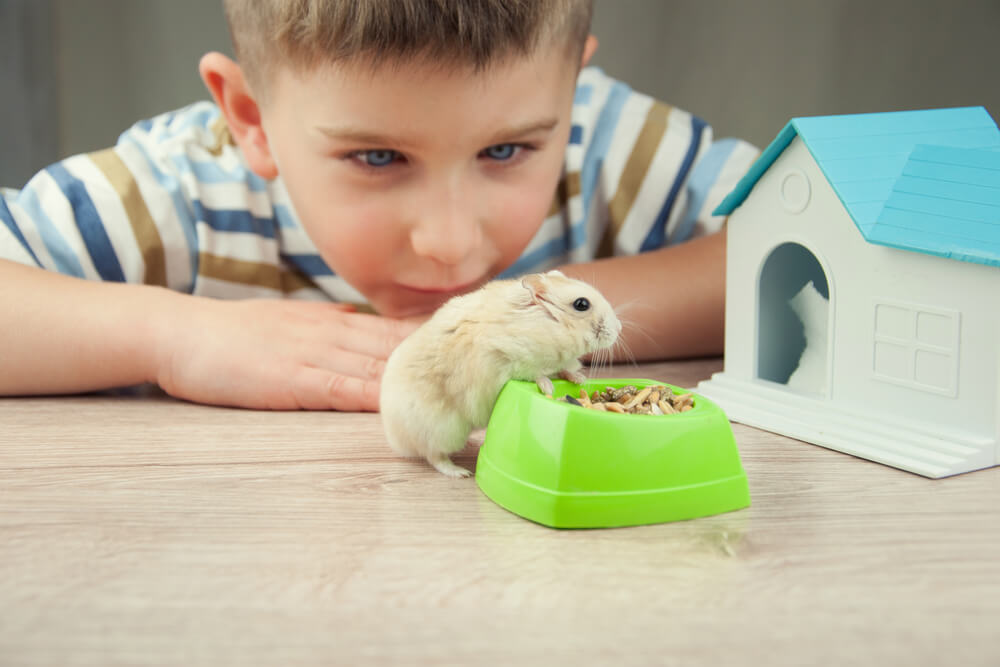
IgorAleks/Shutterstock.com
- Best suited for: active children who enjoy tactile interaction with pets
- Not recommended for: children with weakened immune systems
- Minimum owner age: 7 years
- Allergen level: 6/10
- Difficulty of care: 6/10
In popular culture—movies, cartoons, TV shows—hamsters are often portrayed as fluffy little creatures you can do whatever you like with. However, the reality is quite different. For example, a hamster will squeal if it feels scared or irritated, and if it doesn’t want to interact with you, it may even bite—hard.
Choosing the right cage is crucial: enclosed plastic containers with ventilated lids are possible options, as long as they have good ventilation and plenty of accessories and bedding inside. Wire cages are an alternative, but you have to watch that the hamster doesn’t gnaw too much on the wires, as that can hurt them, and make sure the gaps aren’t big enough to squeeze through—hamsters are amazing escape artists!
Other accessories also need to be carefully selected: a running wheel (a hamster, almost like a cheetah or leopard, loves to run, and needs regular exercise each night), an exercise ball, a water bottle, and small hideouts. Additionally, these little furballs are prone to various infections, so it’s wise to set aside an emergency fund for unexpected vet visits.
Guinea Pigs
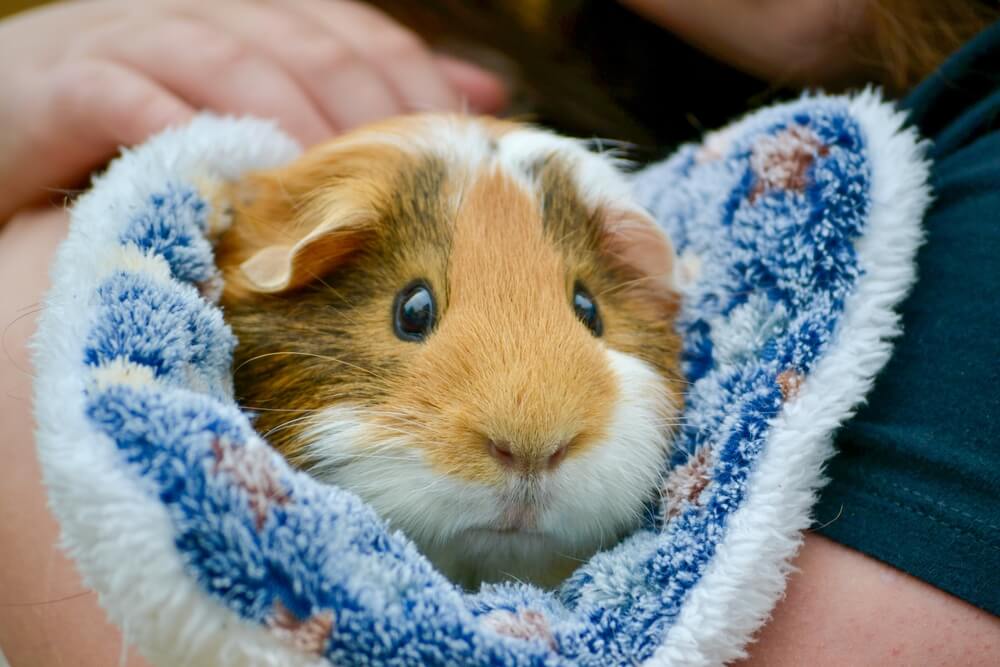
jp imagines/Shutterstock.com
- Best suited for: Children who enjoy gentle interaction and companionship
- Not recommended for: Kids who prefer independent pets or dislike cleaning
- Minimum owner age: 5 years
- Allergen level: 5/10
- Difficulty of care: 5/10
Guinea pigs may seem like just another small pet, but they are quite different from hamsters or mice. These social, gentle rodents thrive on companionship and can form strong bonds with their owners. Unlike hamsters, they are not nocturnal, making them a great choice for kids who want a pet that is active during the day.
When choosing a cage, it’s important to provide plenty of space. A small pet store cage won’t be enough—guinea pigs need a roomy enclosure with solid flooring to prevent injuries. Wire-bottom cages should be avoided as they can hurt their delicate feet. It’s worth noting, also, that guinea pigs don’t like living alone—it’s always best to have at least two together.
Guinea pigs also require a great diet rich in fresh hay, vegetables, and vitamin C supplements since their bodies can’t produce this essential nutrient on their own. A well-balanced diet is key to preventing health issues, and many guinea pig owners take the time to make little fresh salads for their pigs on a daily basis.
Another crucial aspect of guinea pigs’ care is maintaining their habitat. Their bedding needs to be spot-cleaned daily and changed completely at least once a week to prevent odor and illness. Regular social interaction is also vital, as guinea pigs can become lonely and stressed without enough attention or a companion.
While they are generally hardy animals and good pets for kids, guinea pigs can be prone to respiratory infections and dental problems. Scheduling routine vet check-ups and setting aside a small pet emergency fund is always a good idea.
Rats
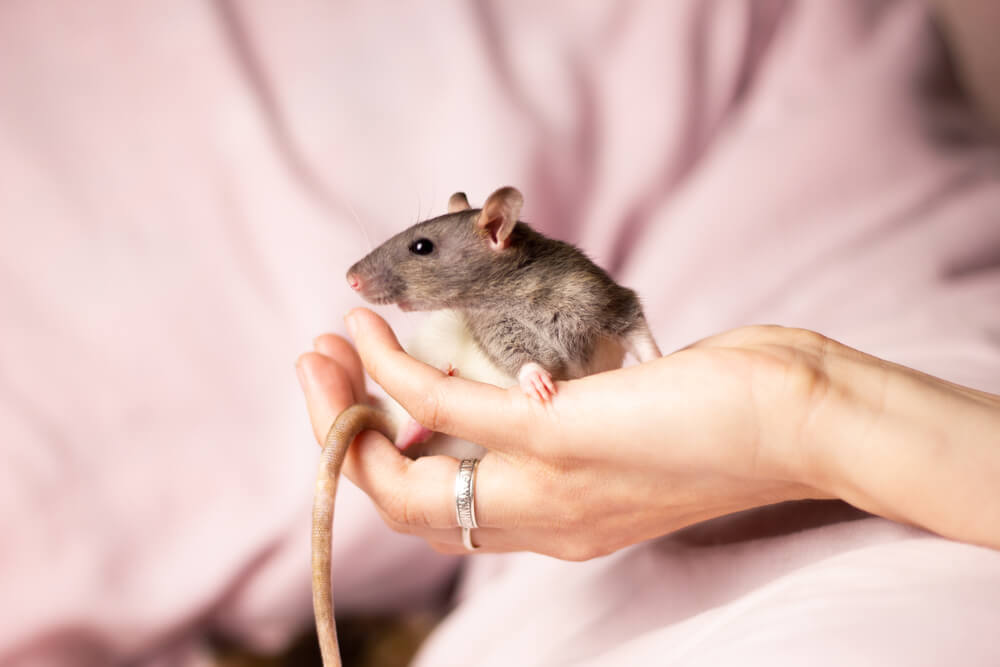
Evgeniy Goncharov photo/Shutterstock.com
- Best suited for: affectionate children who enjoy gentle tactile interactions
- Not recommended for: kids who prefer rough play or those who don’t yet have full control over their grip strength
- Minimum owner age: 7–8 years
- Allergen level: 5/10
- Difficulty of care: 6/10
Although many people see rats as unpleasant or even unsanitary, domesticated fancy rats are actually affectionate and loyal companions. They are incredibly clean animals, and any odor coming from them is usually due to an unclean cage or health issues. If you notice an unpleasant smell, it’s a sign that your pet needs a trip to the vet.
Rats only need baths in rare emergency situations, but keeping their cage clean is a daily responsibility. At a minimum, leftover food and soiled bedding in the toilet area must be removed every day. A full bedding change is required at least once a week.
This cleaning routine is best not left entirely to a child—an adult should take care of washing the cage, while the child can help by adding fresh bedding and arranging everything inside.
Achatina Snails
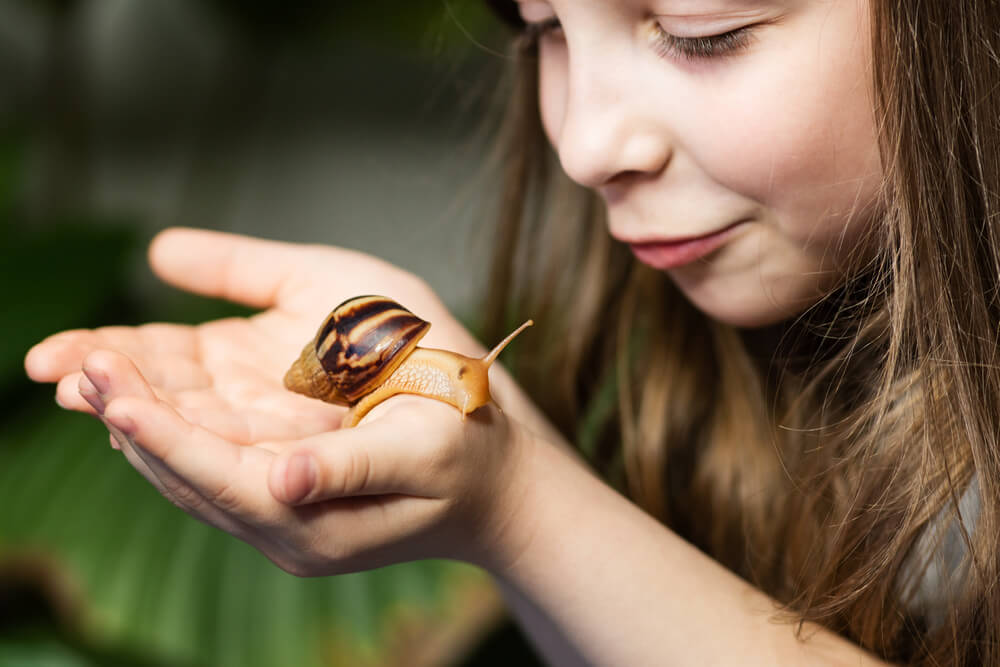
Vagengeim/Shutterstock.com
- Best suited for: calm children who enjoy observing rather than interacting
- Not recommended for: hyperactive kids who want to involve their pet in every aspect of their activities
- Minimum owner age: 3 years
- Allergen level: 2/10
- Difficulty of care: 7/10
At first glance, taking care of a snail might seem incredibly simple—just put it in a jar, toss in a cabbage leaf, and you’re done! But in reality, things are much more complicated, starting with creating the right environment.
Achatina snails can grow to impressive sizes, so they require a spacious aquarium or terrarium. They also need a thick layer of substrate—at least 11 cm deep, preferably more. The soil must be kept moist, which means spraying it several times a day. Choosing the right type of substrate is crucial—sand or wood shavings are unsuitable, as they can injure the snail’s body or shell. The ideal setup includes a coconut substrate with a layer of sphagnum moss on top. The moss not only protects snails from pathogens but also serves as an additional food source.
The biggest challenge for Achatina owners, however, is their high reproductive rate. Before getting one, you should have a plan for dealing with potential offspring, as even giving them away for free can be difficult.
Other Pet Options for Homes and Apartments
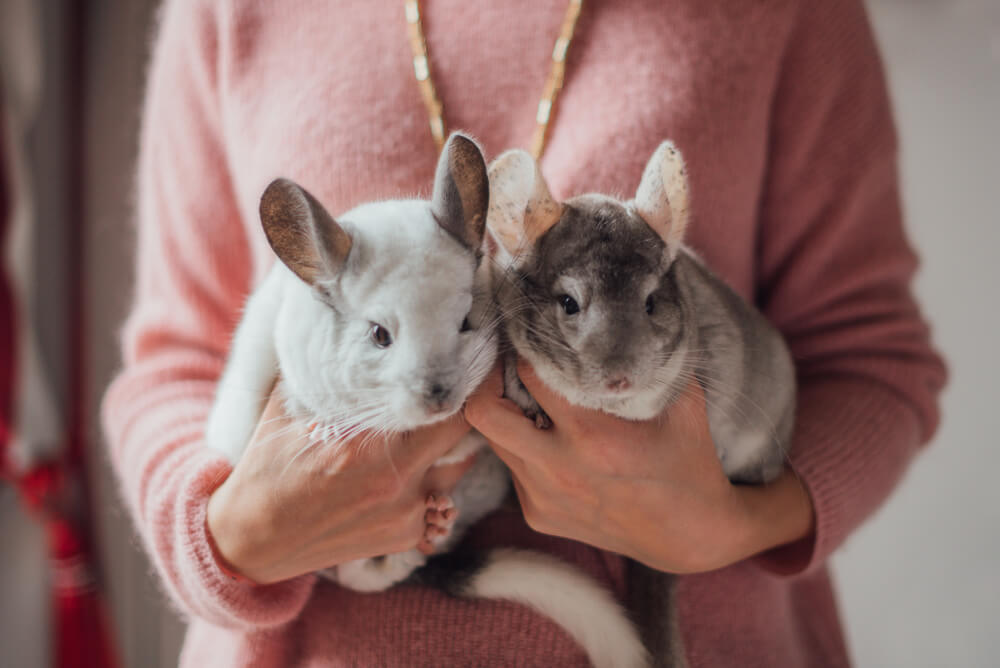
Anya Poustozerova/Shutterstock.com
→→→
| Pet | Best suited for | Not recommended for | Minimum owner age | Allergen level | Difficulty of care |
| Dog | Active, responsible, social, or reserved children | Passive, introverted kids who prefer quiet activities; irresponsible or very young children | Depends on the breed | 5/10 | 9/10 |
| Cat | Calm, gentle, affectionate children | Anxious, nervous kids | 3+ | 2/10 | 6/10 |
| Fish | Any child | No restrictions | 0+ | 1/10 | 2/10 |
| Birds | Careful, attentive children who enjoy singing and observing | Loud, hyperactive, or boisterous kids | Depends on the species | 2/10 | 7/10 |
| Rabbits | Calm, sociable children | Kids who dislike social interaction or are overly anxious | 5+ | 3/10 | 4/10 |
| Chinchilla | Calm, gentle kids | Those who prefer active interaction and play | 8+ | 2/10 | 5/10 |
| Lizard | Curious, responsible, and disciplined children | Kids unprepared for complex care or who are squeamish | 10+ | 1/10 | 7/10 |
| Gerbil | Active children who enjoy tactile contact | Kids allergic to fur, dust, or straw | 6+ | 3/10 | 6/10 |
Bringing a pet into your home is a great way to teach kids responsibility, but keeping them safe is just as important. With the Findmykids app, you can always know where your child is—whether they’re out walking the dog or visiting a friend’s house to see their new pet. Get real-time location updates, set safe zones, and receive alerts when your child arrives or leaves a designated area.
⠀
Download Findmykids today to keep your little explorer safe while they bond with their new furry (or scaly) friend!
How to Teach a Child to Care for a Pet
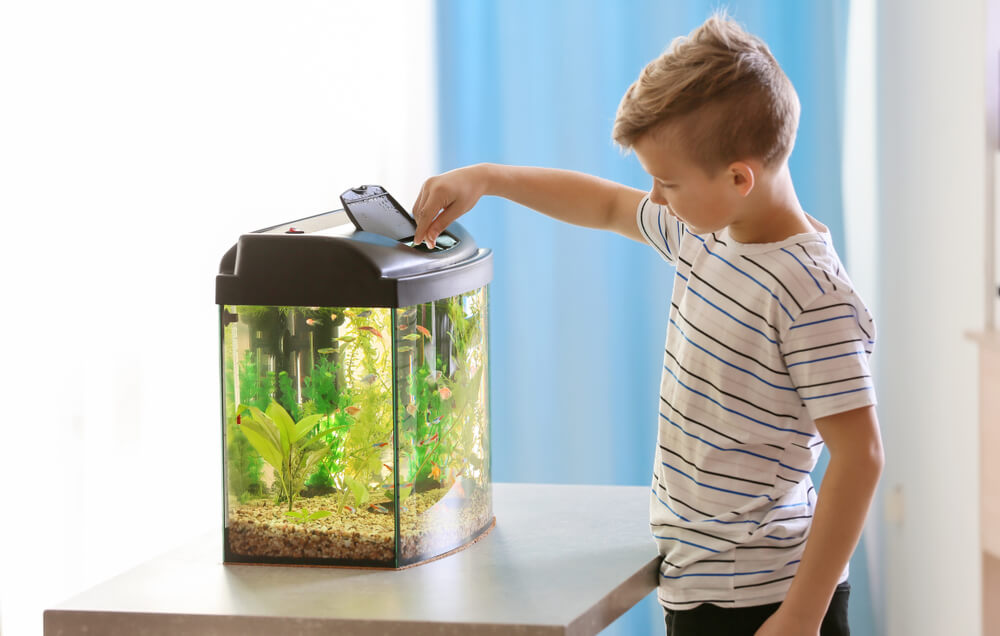
Pixel-Shot/Shutterstock.com
One of the biggest challenges for families with pets is getting children involved in their care. Many parents are familiar with the scenario where a child tearfully promises to take full responsibility for their new pet, only for all the duties to quickly fall onto the parents’ shoulders.
First and foremost, it’s important to remember that the ultimate responsibility for the pet’s well-being always lies with the adults. Even if you “bought it for the child,” “your son swore he’d walk the dog himself,” or “agreed to get a pet only if your daughter took care of it.” No matter what verbal agreements are made within the family, children—due to their age (even teenagers)—are not yet capable of fully taking responsibility, even for themselves. This means that, in reality, the primary care duties will still fall on you. Children can only assist.
That being said, it’s absolutely worth encouraging children to participate in caring for their pets! For example, younger kids can handle simple tasks under light parental supervision, such as changing the water in a hamster’s bottle. You can also involve them in hygiene routines like brushing, bathing, or trimming nails—let them watch and gradually take part.
Taking your child along to veterinary visits is another great way to boost their engagement. If the vet is open to it, let your child be the first to speak with them and answer initial questions about the pet’s condition. It only takes a few minutes, but it gives kids a sense of importance and involvement. You can always step in afterward to clarify or add information.
For dog owners, if you’re starting training sessions with a professional, consider allowing younger family members to attend. You can even discuss with the trainer how children should interact with the dog properly—an expert can explain how to behave correctly and what signs a pet gives to express its emotions and needs.
Checklist: How to Get a Child Involved in Pet Care
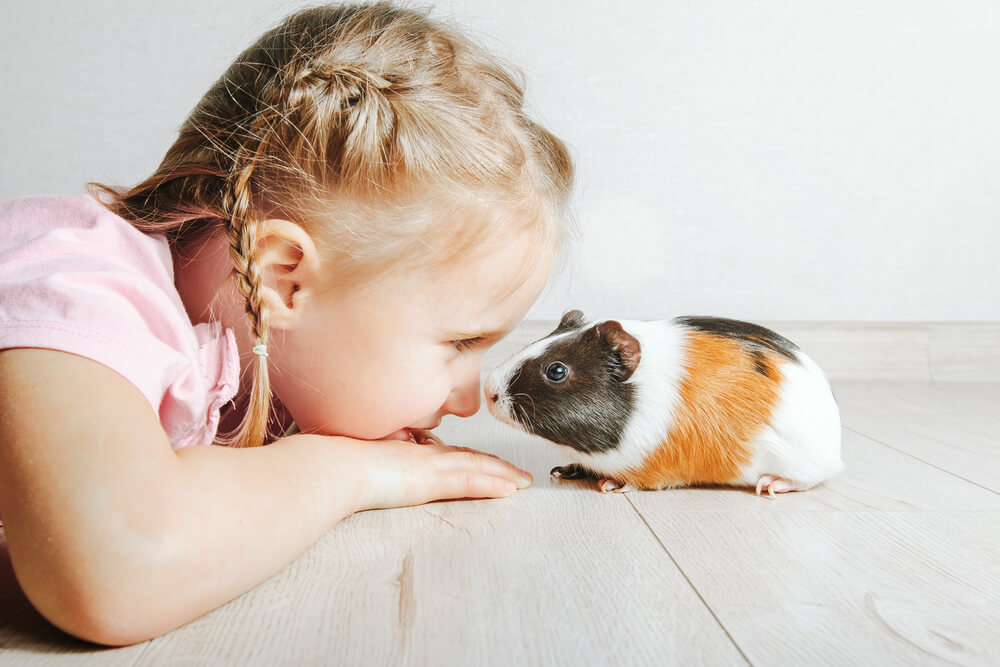
vovan/Shutterstock.com
- Lead by Example — Show your child what responsible pet care looks like through your own actions.
- Teach and Explain — Walk your child through essential pet care tasks, including feeding, walking, cleaning cages, or grooming. Help them understand why each task matters and what happens if it’s neglected.
- Assign Age-Appropriate Responsibilities — Give your child tasks suited to their age and abilities. Make sure responsibilities are manageable and, ideally, engaging for them.
- Establish Routine and Consistency — Create a set schedule for pet care tasks so your child gets used to a routine.
- Encourage and Reward — Praise your child for completing their tasks. Small rewards or verbal encouragement can keep them motivated.
- Promote Interaction — Help your child bond with the pet beyond just responsibilities. Encourage playtime, cuddling, and other positive interactions.
- Supervise and Support — Always be available to step in and assist. Let your child know that they can rely on you for guidance and help when needed.
By taking these steps, you can gradually instill a sense of responsibility in your child while ensuring your pet receives proper care and attention.
The Most Important Takeaway
Ultimately, the specific type of pet you choose is not as crucial as making an informed and responsible decision. Take the time to research credible sources, consult with veterinarians and animal behaviorists before bringing a pet into your home, and educate your child in a way they can understand.
We sincerely hope that your furry, feathered, scaly, or even winged companions bring you nothing but joy! We know that caring for a pet can feel overwhelming—especially at first—but patience and attentiveness will help you master the process over time. Most importantly, a pet should never become a source of conflict in your family. Address any issues together, discuss concerns constructively, and find solutions as a team.
FAQs
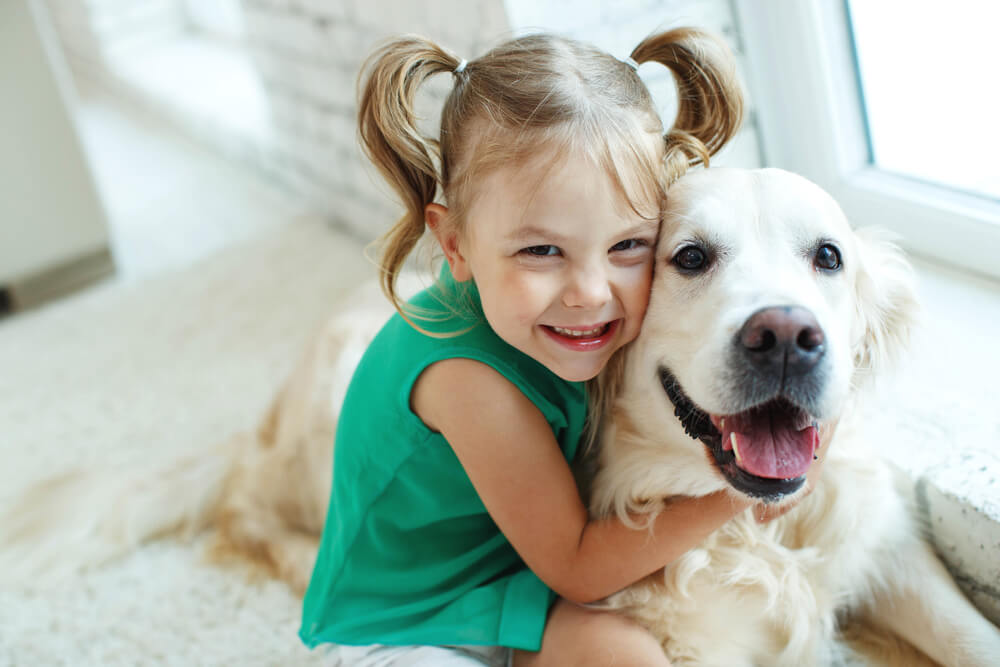
Nina Buday/Shutterstock.com
Now, let’s briefly summarize the key points of this article.
How do you choose the right pet?
The main factors to consider are your child’s age and temperament, the pet’s natural behavior, and the level of care required to provide a comfortable environment.
Should a child take full responsibility for their pet?
No. You, as the adults in the household, bear the ultimate responsibility. However, it’s a great idea to gradually involve your child in pet care tasks suitable for their age.
How can you teach a child to care for a pet?
The best approach is leading by example. Involve your child in cleaning a small animal’s cage, brushing and ear-cleaning routines for cats and dogs, and take them along on walks and vet visits.
At what age can a child have a pet?
Technically, at almost any age. Since the main responsibilities will always rest on the parents, even a toddler can participate in small ways—like helping to pour food into a bowl. However, it’s best to wait until children are around four or five before getting most types of pets, like rodents, as younger ones are more likely to hurt themselves or the animal when handling or playing with it.
What is the easiest pet for a child?
Fish are the easiest to care for, while hamsters and guinea pigs require slightly more effort but are still manageable for older kids.
Which pet is best for young children (under 5 years old)?
Fish and guinea pigs are good choices, as they are gentle and require minimal handling.
Are pets good for child development?
Yes! Pets teach children responsibility, empathy, and social skills. Studies show that children with pets often develop better emotional intelligence.
What pet is best for small living spaces?
Hamsters, fish, and small reptiles (like geckos) are great for apartments or small homes.
Cover image: Serhiy Kobyakov/Shutterstock.com
Проверьте электронный ящик



















